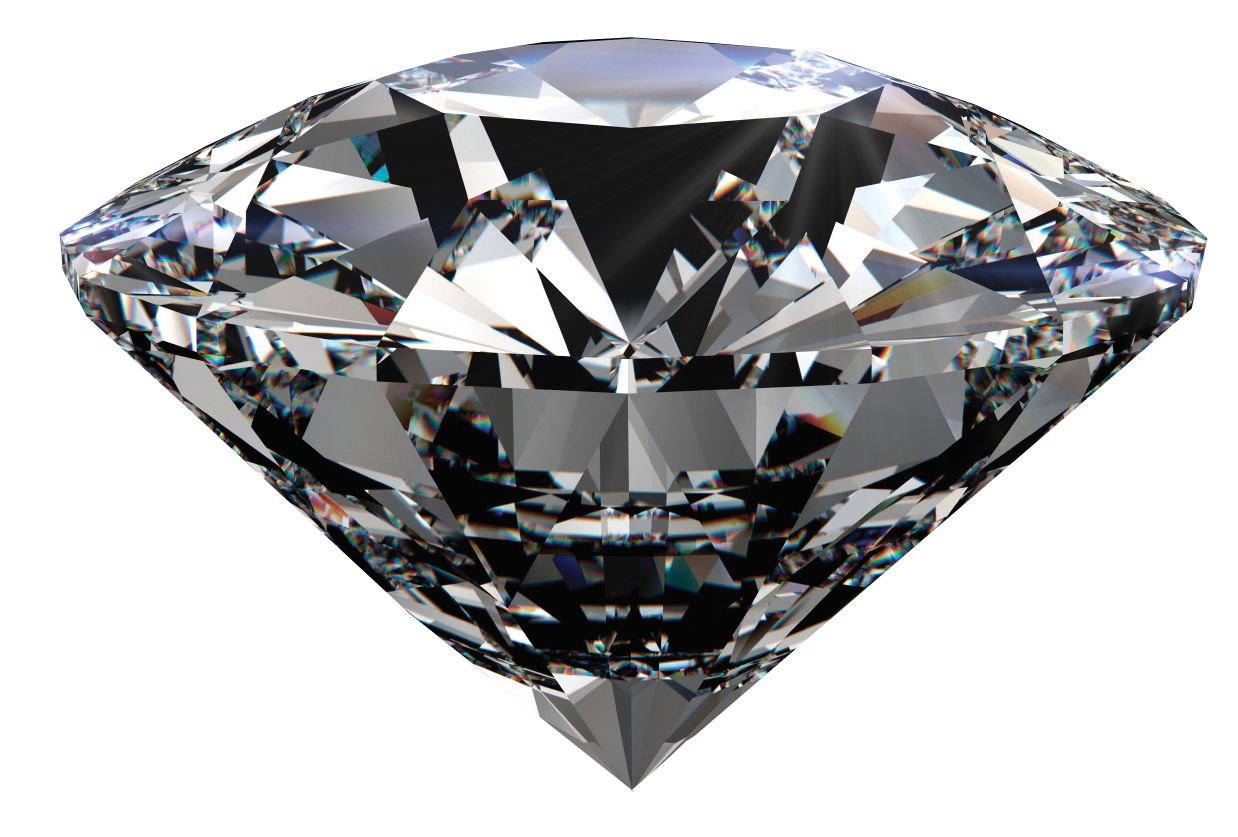In the 1950s, scientists were making breakthroughs in diamond synthesis techniques and managed to produce the first artificial diamonds in a lab setting. General Electric researchers Howard Tracy Hall and Francis Bundy were experimenting with high pressure and temperature conditions similar to those found deep within the Earth. On February 16, 1954, they successfully synthesized the first diamond crystals using a process called high-pressure high-temperature (HPHT) synthesis. This kicked off the modern artificial diamond industry.
The HPHT Synthesis Process
Most artificial diamonds are still produced using the HPHT method pioneered by Hall and Bundy. In this process, a carbon source such as graphite is placed inside a press and subjected to extremely high pressure (around 5500 atmospheres) and high temperatures (over 1500°C). The heat and pressure transform the graphite into small diamond crystals within 1-3 hours. It takes such extreme conditions to overcome the normal graphite crystal structure and force carbon atoms to bond in the famous diamond cubic crystal structure. After cooling, excess carbon and binder material are removed to isolate the artificial diamond crystals.
Chemical Vapor Deposition (CVD) Synthesis
An alternative method called chemical vapor deposition (CVD) was developed in the 1950s as well. CVD provides more control over crystal formation and can produce larger single crystal diamonds. In CVD, a mixture of gases containing carbon such as methane or ethane is heated to dissociate into reactive carbon and hydrogen species. These species deposit atomic layer by atomic layer onto a diamond seed crystal inside a vacuum chamber. The carbon atoms arrange themselves into the diamond structure on the seed over the course of several hours or days of CVD processing.
Properties and Applications of Lab-Grown Diamonds
Synthetic diamonds have nearly identical physical and optical properties compared to natural mined diamonds. Without advanced scientific instruments, it is essentially impossible to visually distinguish a natural diamond from a man-made one. They have the same extreme hardness (10 on the Mohs scale), thermal conductivity properties, and lustrous refractive qualities when cut and polished like natural diamonds.
Due to their purity and ability to precisely control growth parameters, artificial diamonds are increasingly being used for industrial applications that take advantage of their unparalleled material properties. Examples include use in cutting and drilling tools, semiconductor substrates, infrared optics, quantum computing, and high-power electronics. Decorative jewelry made from CVD diamonds has also grown in popularity due to lower cost compared to mined diamonds. Artificial diamonds offer a sustainable alternative to depleting natural resources.
Quality Assessment and Certification
Gemological laboratories use a variety of testing techniques to examine inclusions, nitrogen content, crystal structure irregularities, and isotope ratios to authenticate natural diamonds and identify synthetic versus natural origin. The Gemological Institute of America (GIA) and American Gem Society (AGS) provide certification for both natural and lab-grown diamonds to assure consumers on quality, treatments, and origins. Diamond producers also work to develop traceability schemes by laser-etching microscopic production markers inside diamonds.
Market Status and Outlook
The global synthetic diamond industry has experienced steady growth in recent decades. In 2019, supply was estimated at over 150 million carats annually with an industry value of around $14 billion USD. Major producers include De Beers, ALROSA, and New Diamond Technology. China is a major manufacturing hub, especially for CVD diamond growth reactors and equipment. Around 80% of supply is directed towards industrial applications like abrasives, cutting tools, heat spreaders, and electronics.
While still a small percentage of overall diamond supply, polished synthetic jewelry stones have gained popularity and market share. Large untaken CVD crystals up to 10ct in size are routinely produced. As technology further improves quality and lowers costs, artificial diamonds are expected to continue gaining ground not just industrially but also in fine jewelry over the coming years. Their eco-friendly and conflict-free attributes appeal to many modern consumers, diversifying the definition of a diamond. Overall, the artificial diamond industry looks poised for ongoing expansion to meet the needs of 21st century science, technology, and luxury markets.
About Author:
Money Singh is a seasoned content writer with over four years of experience in the market research sector. Her expertise spans various industries, including food and beverages, biotechnology, chemical and materials, defense and aerospace, consumer goods, etc. (https://www.linkedin.com/in/money-singh-590844163)
View More Insight @ Synthetic Diamond

